A Closer Look at the Old City
I had finally accepted that I needed a guide to really appreciate the old city, but wanted some time alone on my last morning in Harar. I arranged to meet Guma at 8AM and left the hotel to explore at 6:30.
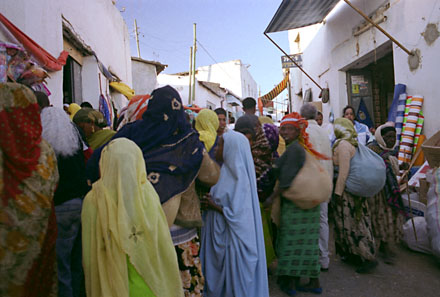 Activity on Harar's streets never ends |
Despite the business of buying, selling and negotiating, people still found the time to stare, point and outright ask me for money. Only one woman struck me as unconditionally friendly, a bread seller with a beautiful smile. She didn't speak English, but appreciated my attempts at Amharic and loved meeting someone Chinese. I was definitely getting the feeling that was a rare occurrence in Ethiopia, but even with this excuse the Hararis' behavior was wearing me down.
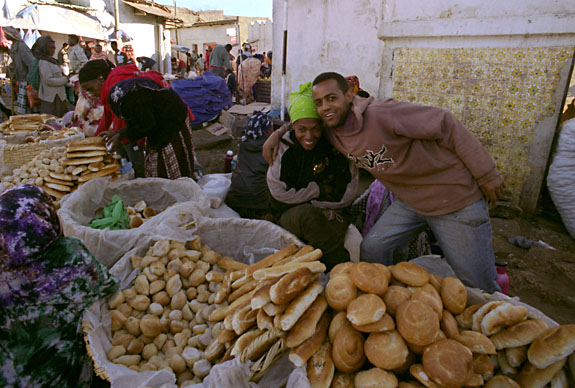 Guma and I agreed on 110 birr for a three-hour tour that expanded to six. The price was a bit lower than usual, but I was currently the only tourist in Tewodros. As soon as we joined up, I was no longer hassled for money and met purely friendly interest everywhere. We saw the sweet bread seller again and she happily posed for a picture with her friend.
Guma and I agreed on 110 birr for a three-hour tour that expanded to six. The price was a bit lower than usual, but I was currently the only tourist in Tewodros. As soon as we joined up, I was no longer hassled for money and met purely friendly interest everywhere. We saw the sweet bread seller again and she happily posed for a picture with her friend.
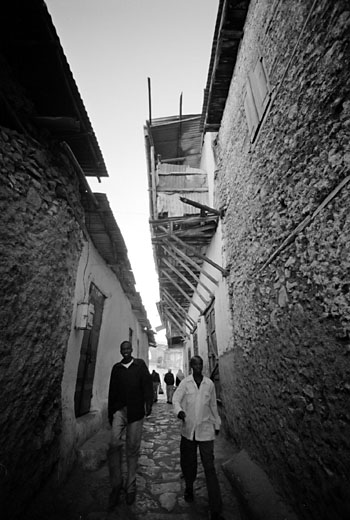 One of Harar's many narrow alleys |
We came across a coffee wholesaler, and while I'm not normally a coffee drinker myself, I wanted to buy some as souvenirs. Ethiopian coffee is world-renowned, and Harar apparently produces the best in the country. According to Guma, there were three companies in Harar and I was buying from the only one that did not sell to Starbucks.
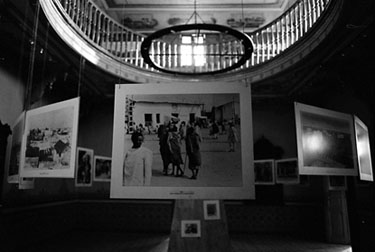 Photo gallery in Rimbaud's house |
The house was now a museum with a beautiful collection of Rimbaud's own black-and-white photos of the city dominating the ground floor. For some reason Guma kept pushing me to view the photos quickly and get out before the guard noticed, when the entrance fee was only 5 birr anyway.
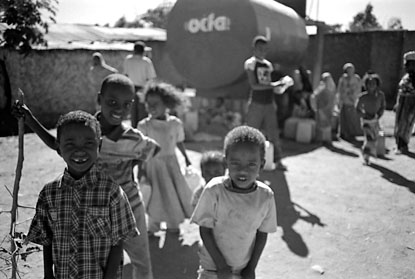 Kids at the water tank, eager to be photographed |
Yellow plastic oil jugs were saved for collecting water, and I began associating the sight of them with Harar. Docile donkeys pulled loaded carts through the cobbled streets. An elderly, garrulous cobbler turned old tires into sandals, apparently a popular product in town. According to Guma,
the man waxed poetic over me, but of course I didn't really know.
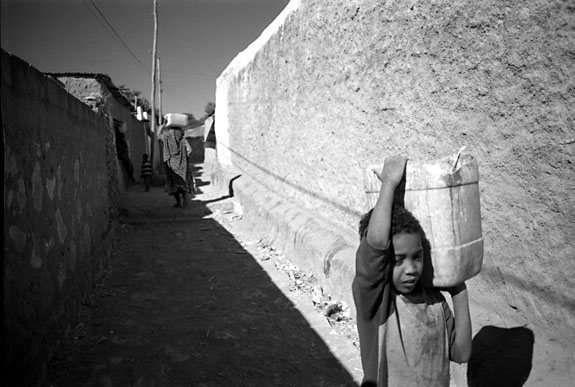
Carrying water in oil jugs
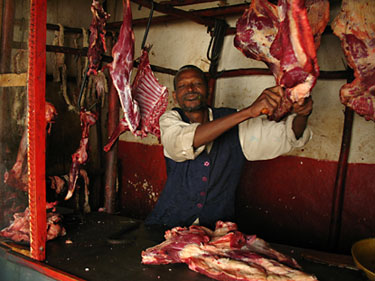 In a butcher shop I was immediately asked for a photo fee, although I hadn't originally intended to take a photo. Once promised a couple birr, the butcher responded with model-quality poses. A trio of teenaged girls in headscarves and glitter lipstick approached us and for reasons unknown asked Guma if they could kiss me. Mystified, I agreed, and they marveled at the smoothness of my cheek.
In a butcher shop I was immediately asked for a photo fee, although I hadn't originally intended to take a photo. Once promised a couple birr, the butcher responded with model-quality poses. A trio of teenaged girls in headscarves and glitter lipstick approached us and for reasons unknown asked Guma if they could kiss me. Mystified, I agreed, and they marveled at the smoothness of my cheek.
I noticed garbage spread thickly in the street. Guma told me the old city wasn't equipped for disposal and drainage, so the streets were simply cleaned out twice a week. He also mentioned that schools in Ethiopia are not free, not even kindergarten, which helped explain why I saw so many kids wandering around on a Tuesday morning. Apparently health care was not free either, which seemed ridiculous in a country so impoverished.
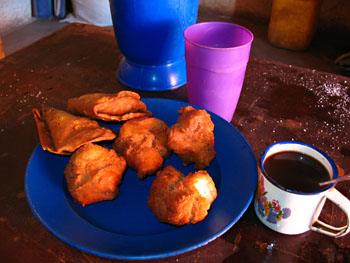 Even more interesting than the old city's streets was exiting the wall on the far side and seeing the rural people gathered in and around tents on the dusty hill. They came to Harar to sell supplies like firewood, peanuts and sugarcane. Because it looked like a camp, I was surprised when Guma said they came in daily. It looked pretty rough.
Even more interesting than the old city's streets was exiting the wall on the far side and seeing the rural people gathered in and around tents on the dusty hill. They came to Harar to sell supplies like firewood, peanuts and sugarcane. Because it looked like a camp, I was surprised when Guma said they came in daily. It looked pretty rough.
We headed to one of the tarpaulin shacks to get breakfast. Sitting on plastic chairs at a timeworn wooden table, we ordered coffee, fried dough balls, sambusas and a sizzling pan of fuul. Tasty, filling, and a mere 8 birr for the both of us—of course Guma expected me to cover him but at that price I couldn't take offense.